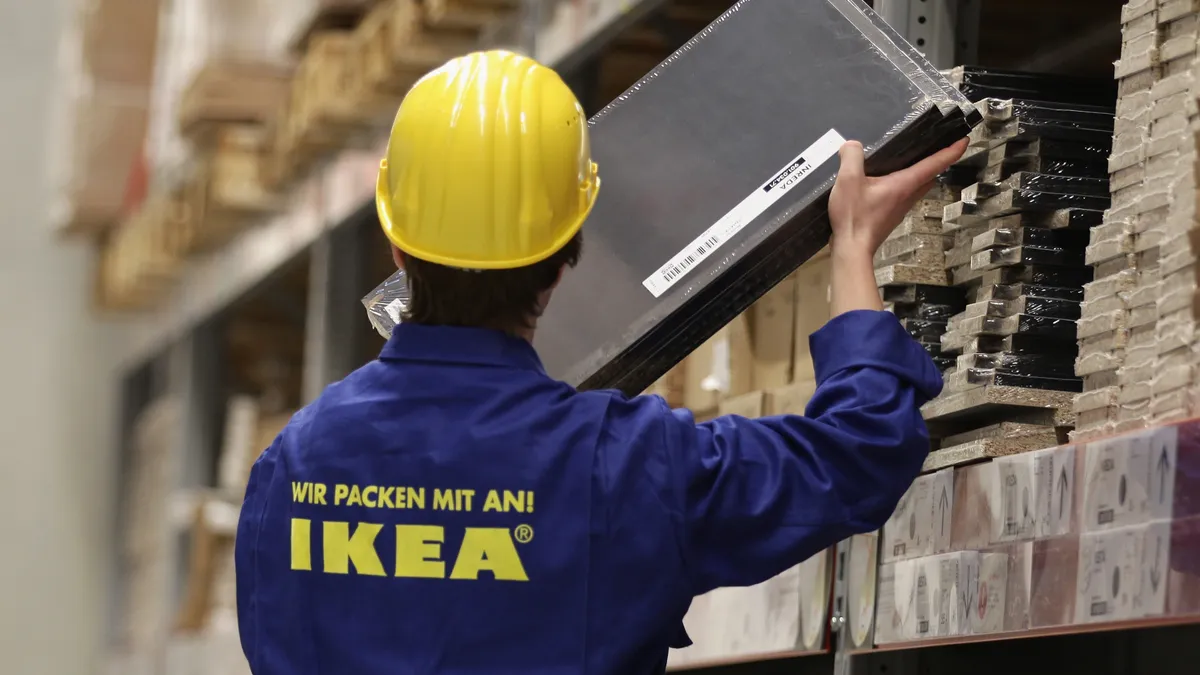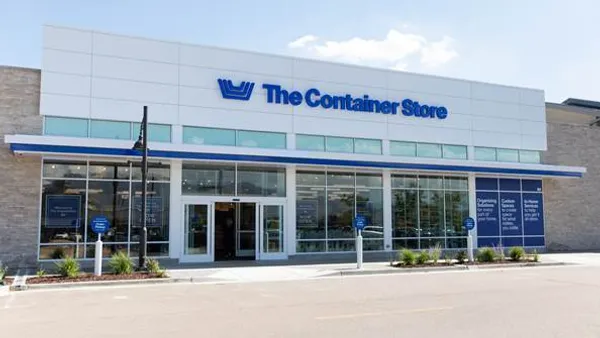Dive Brief:
- Ikea launched two sustainability initiatives in the United States earlier this month, which include a solar installation project along with renewable heating and cooling schemes, according to a company press release.
- The solar project will add solar car parks, rooftop panels and battery energy storage systems to seven stores and fulfillment centers, while the renewable heating and cooling project aims to replace and optimize heating, ventilation and air conditioning at five stores by the end of 2023.
- The strategy is in line with the retailer’s aim to become climate positive by 2030.
Dive Insight:
Ikea said the clean energy scheme was a continuation of its solar power project based in Paramus, New Jersey, which was the first to be completed in July this year. The store features the company’s first long-span carpark system that maximizes the number of solar panels and extends across the entire parking deck roof.
The company plans to expand its solar installation project across six additional units across the country, with locations in Brooklyn, New York; Covina, California; New Haven, Connecticut; Stoughton, Massachusetts; Tempe, Arizona, and Tejon, California. Ikea estimates that the seven units will collectively provide 13,600 megawatt hours of yearly production once operational, which is equivalent to offsetting 5,883 tons of carbon emissions.
“We are taking bold steps to reduce our climate footprint in the United States and become a climate positive business by 2030,” Mardi Ditze, country sustainability manager of Ikea U.S., said in the press release. “The solar project aligns with our goal of being powered by 100% renewable energy, while the renewable heating and cooling project works toward increased energy efficiency and the goal of eliminating fossil fuels from our operations by 80% by 2030.”
The renewable heating and cooling scheme will replace and optimize the existing HVAC within five store locations this year and install new centralized systems with higher energy efficiency. The locations include Round Rock, Texas; Canton, Michigan; Draper, Utah; and Orlando and Tampa, Florida.
However, this development in clean energy isn’t the Swedish manufacturer’s first move toward sustainable initiatives. In its annual sustainability report, Ikea discussed its progress on transitioning into a circular business and using more renewable sources to build its furniture. Ikea’s best-selling “Billy” bookcase was redesigned to reduce the use of plastic and shifted from using veneer to paper foil in its manufacturing, according to the report.
Additionally, the company also announced an investment of over $2.2 billion into its U.S. growth strategy in April, with plans to help modernize and enhance the retailer’s existing stores and improve its last-mile fulfillment process to provide faster and more sustainable deliveries.
Ikea’s progress in sustainability echoes climate forward initiatives taken by other home brands such as Williams-Sonoma, the parent company behind home furnishing retailers West Elm and Pottery Barn. Williams-Sonoma has also made headwinds in reducing its carbon footprint: The company said it decreased its emissions by 24% and executed its first long-term investment in renewable energy in Texas by supplying 100% wind energy to all retail stores and distribution centers in the region, according to its 2022 impact report released in July.
Similar to Ikea, Williams-Sonoma also has a sustainability target to reduce emissions across its value chain by 2030 and become carbon neutral by 2025.















